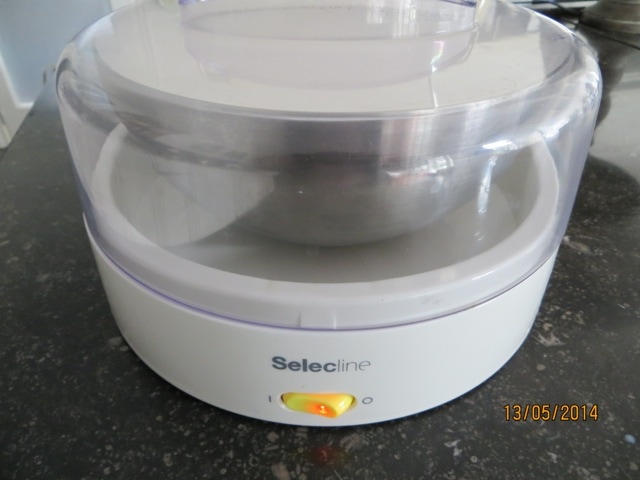Greek style yogurtIt was very much en vogue to make your own yogurt in the latter part of the 20th century but now you may well be asking, "why bother?"
Well it's about two things: taste and texture, and it's worth it. Traditionally, Greek yogurt is made by straining the yogurt to remove the whey (the liquid remaining after the milk is curdled), and the end result is a more-solid yogurt with less sugar, fewer carbohydrates, and more protein compared to regular yogurt. For example; Fage brand Greek yogurt is made using Pasteurized Milk and Cream, but contains Live Active Yogurt Cultures (L. Bulgaricus, S. Thermophilus, L. Acidophilus, Bifidus, L. Casei). Make sure you use the full fat 5% version though. So to get started, you just need to mix a tablespoonful of your selected good quality yogurt with one litre of milk and leave it for a few hours for the bacteria to do their work. Then you'll need to strain it to your desired thickness and depending on the temperature, the yogurt thickens in 6 to 8 hours. And... Next time around, just use a small amount of your remaining yogurt as a starter for the next batch. Lactose free - easier than you think Yes... this bit's easy. If you follow the instructions on the right but leave the yogurt for at least 24 hours, the lactose in the thickening yogurt will have been chemically absorbed. Best not to keep for more than 30 hours before straining and cooling, or the active bacteria lose some effect. Some say it's a little more sour in taste but to my taste buds, only marginally so if at all.
Is my home-made yogurt really pro-biotic?
Yes - as long as you use live cultures to make your homemade yoghurt, and you'll find these in most store-bought 100% Greek yogurts which contain no additives. Fage, for example is widely available and provides an excellent starter. You'll usually find information about strains of healthy bacteria on the label including: Lactobacillus bulgaricus, Streptococcus thermophiles, Lactobacillus acidophilus, Lactobacillus casei and Bifidobacterium Bifidus. I recommend using an organic milk for the best taste and quality and also... because you know the cows are being particularly well treated. |
'How to' guide for family quantities
No yogurt making machine for that constant temperature?
At a constant 30°C, it will take around 12 hours for the thickening process to complete. At lower temperatures longer, so if you don't have a warm drawer or an old-fashioned airing cupboard, try making it in your warmest room with the aid of sunshine - as the Greeks used to. How about raw milk?
Raw milk from well cared for cows should provide you with the very best basic ingredient yet... because it's teaming with healthy bacteria, I find you need to experiment with different starters to get the right taste and consistency. It is admittedly more expensive, yet although you are effectively pasteurizing the milk when you heat it, my opinion is that healthwise and taste-wise, it's the best. |
